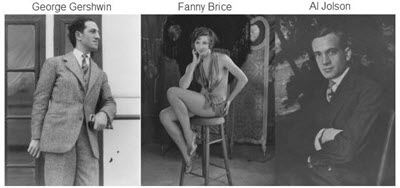History 1810 to 1819 Major News and Events, Significant Technology
1810, 1811, 1812, 1813, 1814, 1815, 1816, 1817, 1818 and 1819 History
Major News Events From 1810 to 1819
- 1810 October 18th The first Oktoberfest
- 1811 November 7th The Battle of Tippecanoe
- 1812 April 30th Louisiana Joins the Union
- 1813 January 28th Jane Austen's Pride and Prejudice was published.
- 1814 August 24th British burn down the White House and the US Capitol building in Washington D.C
- 1815 June 18th Battle of Waterloo
- 1816 July 9th Argentina Gains independence
- 1817 December 10th Mississippi Became the 20th State.
- 1818 July 4th Stars and Stripes U.S. Flag
- 1819 January 29th Raffles Founding of Modern Singapore
Find More Detailed Information Below
1810
The first Oktoberfest, Aus München, a convivial gathering in which singing and folk dancing are performed. It originated from the October 18th, 1810, celebration of Crown Prince Ludwig and Princess Therese von Saxe-Hildburghausen's wedding. Its earlier renditions were disrupted for several socio-political reasons, and it did not settle into a regular annual event until the mid-Nineteenth Century. The 1810 performance was also to celebrate a horse race. The marriage had taken place on October 12th, and the race on October 17th, and its subsequent two week performances have kept to a more regular ending of the first Sunday in October.
Beethoven "Fur Elise"/"For Elise", We don't know who Beethoven's Elise was, but it could be that one of his contemporaries may have incorrectly written its title for him. Its solo piano is a favorite for many people. Despite the date which is on the manuscript: April 27th, 1810; it was not published until about fifty years later. The suggestion that it is a personal piece to a lady is ratified by it being a close match to the name of one of his lady students. His musical masterpieces are even more remarkable when you consider that by 1810, his loss of hearing forced him to stop playing in public and concentrate on composition.
The Tin Can, English inventor Peter Durand patents the Tin Can to create an air-tight container for the distribution or storage of food. The strange thing about this is no one invented a can opener for another 60 years, so a hammer and chisel were used to open the cans.
1811
The Battle of Tippecanoe, The Shawnee brothers Tecumseh and Tenskwatawa stopped their people from selling land to settlers and resisting the tempting offers that were made to them. The Shawnee had set up camp at the confluence of the Tippecanoe and Wabash rivers in Indiana and called on the surrounding tribes to rise up. The governor of the Indiana Territory brought soldiers into the area and the Native Americans attacked them on November 7th. The soldiers won and the Tippecanoe settlement was pulled down.
New Madrid Earthquake/Missouri, one of the worst earthquakes to strike the United States started on December 16, 1811 and followed with 3 more earthquakes ending on February 7th, 1812. The Magnitude of the earthquakes ranges in history books from 7.0 to 8.0 but modern seismologists believe the figure was closer to 7.0. Because the area was sparsely populated, there were few reports of damage and death. Some sections of the Mississippi River appeared to run backward for a short time following the earthquakes.
1812
Louisiana Joins the Union, Louisiana joined the Union as the 18th state. Its first governor was William Claiborne. Native Americans had been in Louisiana for hundreds of years prior to becoming first a Spanish colony and then a French colony with many Haitian, West African and Cajun and Creole immigrants while under French Rule (the US purchased Louisiana from the French in 1803).
Napoleon Retreats from Moscow, After Napoleon had assured his European appliances with a family marriage to the Habsburgs, he embarks on the invasion of Russia (with a half-French army). The march across Russia was badly affected by the country's snow and ice, and the city had been burnt before his arrival. The inhabitants had also assured them that they had removed all foodstuffs from the area. The French were forced to withdraw, and Napoleon's 450,000 men were reduced to the 20,000 that returned to Western and Central Europe.
The Indian War of 1812, The War of 1812 effectively took place between 1809 and 1815, from its introductory phases or movements and culmination. It was to end the events that had begun in the American Revolution and had started (in 1812 at least) on the infringement of American and British trading rights. It had been nothing more than a stalemate before the end of 1814 but had resulted in Andrew Jackson's defeat of the British troops that had been sent to capture New Orleans. The war had resulted in about 1,600 British deaths and 2,260 American ones. The Star-Spangled Banner was written by one of its prisoners (in captivity) and the Tippecanoe Indians sided with the British.
Fort Dearborn/Modern Day Chicago Attacked, British Allied Potawatomi Indians attack Fort Dearborn forcing US Forces to evacuate women and children.
USS Constitution/Old Iron Sides, The USS Constitution continues her success against Great Britain, capturing numerous merchant ships and defeating British warships including HMS Guerriere and Java. The battle with Guerriere earned her the nickname of "Old Ironsides". The USS Constitution is a wooden-hulled, three-masted heavy frigate launched in 1797.
1813
Pride and Prejudice, Jane Austen's Pride and Prejudice was published in 1813 and recounts the story of the Bennett family, and the daughters' relationships. It was written and edited over about fifteen years (with a rejection on its initial submission). Originally published anonymously it is not necessarily an easy read for either the original period's readers or from a modern perspective. Its 1995 televisual rendition is a better rendition for us to understand.
1814
British Burn Down Washington D.C., During the War of 1812, British Troops led by General Robert Ross entered the US capital of Washington D.C. and burned many of the public buildings down, including the White House and the US Capitol building. The event took place on August 24th , 1814.
Norway Gains Independence, Norway had been a part of the Kingdom of Denmark but due to conditions created by the Napoleonic wars the country was given to Sweden to avoid further occupation and conflict. This event sparked an independence movement within Norway that contributed to the creation of a Norwegian constitution in May of 1814. In the end, Norway did agree to a precarious union with Sweden but had created their own constitution. Norway would be in a union with Sweden until 1905.
Napoleon Abdicates the French Throne, in 1814, Napoleon was forced to abdicate the French throne after he was surrounded by opposing forces and Paris was captured by the "Sixth Coalition" of allied forces. After his abdication in April of 1814, Napoleon was exiled to the island of Elba in the Mediterranean Sea. He escaped from Elba in 1815 and was eventually exiled to the island of Saint Helena where he later died.
1815
Battle Of Waterloo, Napoleon had returned to Paris from his imprisonment on Elba without much in the way of opposition and had collected many of his old troops and commanders on the march. The Allies met in Vienna and decided that they would not accept the emperor's peaceful overtures. He had decided to break up their amalgamation with an attack on them before they got to France, and battle was joined at Waterloo in Belgium on June 18th. It was here that the French were defeated by the Duke of Wellington and the Prussian Gebhard von Blücher's men. The size of the armies at Waterloo is listed as: 68,000 British, 45,000 Prussians, and France's 72,000 soldiers.
The Battle of New Orleans, the final battle of the 1812-1814 war between Britain and the United States occurred when Britain attempted to invade New Orleans and was defeated by Major General Andrew Jackson.
1920's Fashion
Ladies Hats from The Decade


Part of our Collection of Childrens Clothes from the Decade

Childrens Toys from The 1920's
Part of our Collection of Toys from The 1920's

1920s Music
From our 20's Music Page

1816
Argentina Gains independence, Argentina becomes independent of Spain on July 9th, 1816 (which is an interesting footnote, or comparison to the Falkland Islands having been landed on for the first time by an English ship in 1690). Their desire for independence had come from Napoleon's domination of Spain and inspired by José de San Martino's campaigns across the other South American countries. It was following Napoleon's defeat at Waterloo that representatives from the provinces declared the Acta de la Declaratión de la Independencia Argentina.
Indiana Became the 19th State, The State's delegates had started to meet in Corydon, and had held a constitutional convention early in the year. They had followed the State Convention with an application for Congress to recognize them. This was granted on December 11th, and Indiana became the 19th U.S. State.
1817
Mississippi Became the 20th State, Mississippi was incorporated into the United States on December 10, 1817. The Mississippi Territory was organized in 1798, from territory ceded by Georgia and South Carolina and later expanded to include disputed territory claimed by both the United States and Spain.
The First Seminole War, Settlers in Northern Florida and Southern Georgia attack the Seminole who then retaliate by attacking homesteads. The war continues through to 1818 with no conclusive winners.
1818
The Modern Prometheus/Frankenstein, Mary Shelley's Frankenstein which was submitted on January 1st of 1818. It had been conceptualized during her visit to Geneva (when she was eighteen). Despite its initial reviews, it had gained a fair readership (from which there were several stage actors). She was married to Percy Shelley, which might explain her literary fan base.
Illinois Became the 21st State, Illinois was incorporated into the United States on December 3rd, 1818, from the relatively short-lived Illinois Territory. The State's capital remained Kaskaskia until it was changed to Vandalia and Springfield. It had received statehood despite being below the federally stipulated population of 60,000. It had been helped by Nathaniel Pope's influence in Washington.
Modern Fire Extinguisher, the modern fire extinguisher was invented by British Captain George William Manby, it consisted of a copper vessel of 3 gallons (13.6 liters) of pearl ash (potassium carbonate) solution contained within compressed air.
Stars And Stripes U.S. Flag, Congress decided the U.S. flag would consist of 13 red and white stripes represent the original Thirteen Colonies that rebelled against the British crown and became the first states in the Union, and 20 stars, with a new star to be added for every new state. The act specified that new flag designs should become official on the first July 4 (Independence Day) following admission of one or more new states.
1819
Raffles Founding of Modern Singapore, As an East India governor, Sir Stanford Raffles was sent to administer an easterly port for the protection of England's expanding trade routes. He landed in Malaya on January 29th and started the building of Singapore. With opposition from the Dutch, he made it into a free port that was open to the ships of any nation.
Alabama becomes the 22nd State, Alabama was the twenty-second state, admitted to the Union in 1819.
Washington Irving Publishes "The Sketch Book" which includes "Rip Van Winkle", Washington Irving published "The Sketch Book of Geoffrey Crayon" often referred to as "The Sketch Book" which included a compilation of short stories including "The Legend of Sleepy Hollow" and "Rip Van Winkle." The pseudonym "Geoffrey Crayon" was one that Washington Irving used throughout his literary career.
US Congress Enacts First Immigration Law, the law established standard procedures for passenger ships transporting immigrants and the requirement to keep accurate records.